Robotics demo day
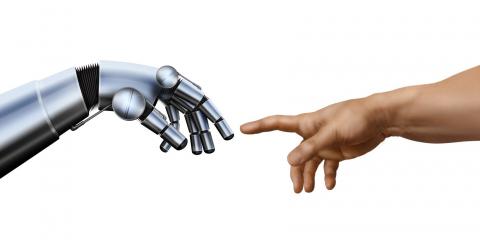
Event address
Registrations are closed!
On 14 September, we invite you to our Robotics Demo Day, where we will showcase cutting-edge robotic technologies.
This event promises an interactive experience through high-level demonstrations, providing you with a firsthand view of our innovative projects that can greatly benefit your company too.
Information about the involved demos and projects can be found below the registration form.
Programme:
| 12h00 | Lunch |
| 13h00 | Intro |
| 13h30 | Demo visits |
| 15h00 | Coffee break |
| 15h30 | Demo visits |
| 17h00 | Networking drink |
Registrations are closed
It's not longer possible to subscribe.
Demos that you will discover
CEROS Demonstrator
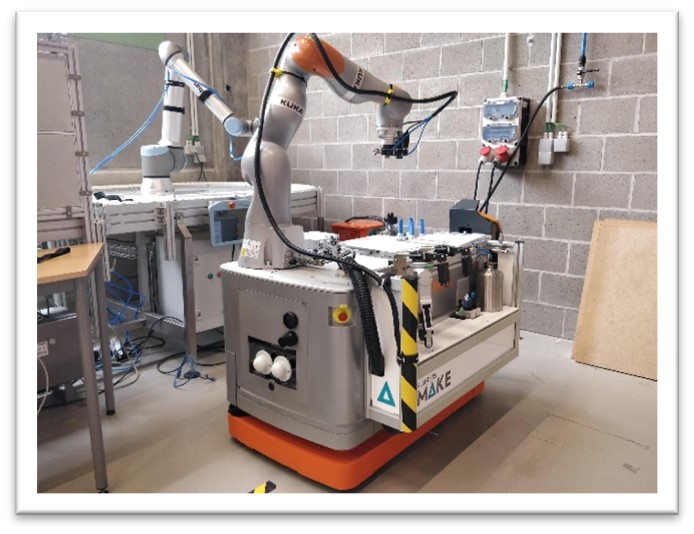
Flexible (re)configuration of production lines using an open generic way of robot programming. This is done by having an upper-level open program communicate with the robot's controller via a driver. An application of using the driver is robot -vision calibration.
Flexible Robotic Workcell
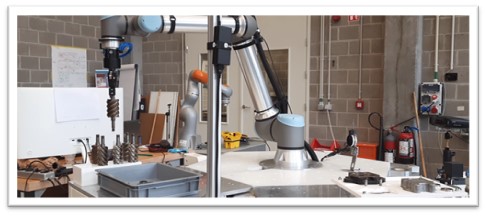
Automation in manufacturing of high mix - low volume products require flexibility regarding part manipulability and workcell reconfigurability. We demonstrate a flexible workcell which is able to deal with different product types and is easily (partially automatically) reconfigured. We have Implemented a skill-based vendor-independent reference architecture for manipulation of mechatronics product & its variants, making use of grippers that deal with variance, combined with skills of grasp monitoring and tool change.
Robust tactile robotic gripping solution for careful handling of fragile objects
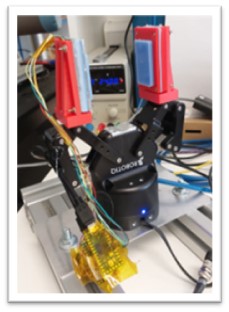
Our in-house designed tactile robotic gripping solution uses robust and low-cost tactile sensing to simultaneously localize and estimate normal contact forces in real-time, enabling careful grasping and manipulation of fragile objects by an industrial gripper.
Electromagnetic gripper for efficient de-stacking and gripping of metal sheets
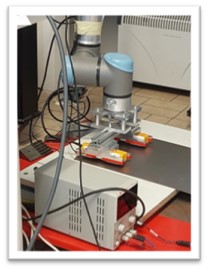
A fast electromagnetic gripper that offers a versatile and adaptive solution for handling a wide range of metal sheets with different geometries, thickness, perforations and surface oiliness.
Automated 3D scanning for geometric defect detection
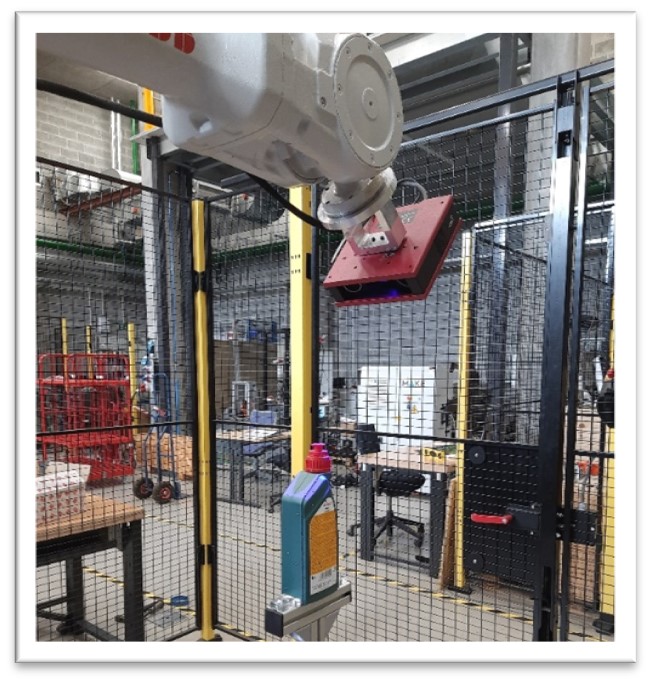
3D scanning is a suitable tool for defect detection, but currently, it requires a lot of manual configuration or even manipulation of the scanner. The technology we developed allows 3D scanning to be applied for mass customization without the need for human intervention.
Skill based task execution and task planning for human-robot cooperative assembly
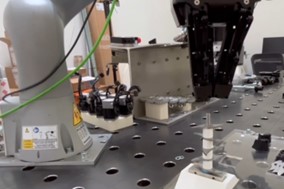
This demo shows the flexibility of cooperative assembly between operators and industrial robots as the operator can choose his actions within the assembly and the robot will aid by executing complementary assembly tasks. A framework allows for the implementation of skills which allows the robot to execute the desired task without fail.
Towards robust learned control of a quadruped robot

A robust controller is deployed on a quadruped robot using simulation and reinforcement learning. This advancement enables autonomous legged robots to perform work and inspections in challenging conditions, ensuring safe and robust operation.
Efficient gripper selection, design and testing to improve robotic deployment
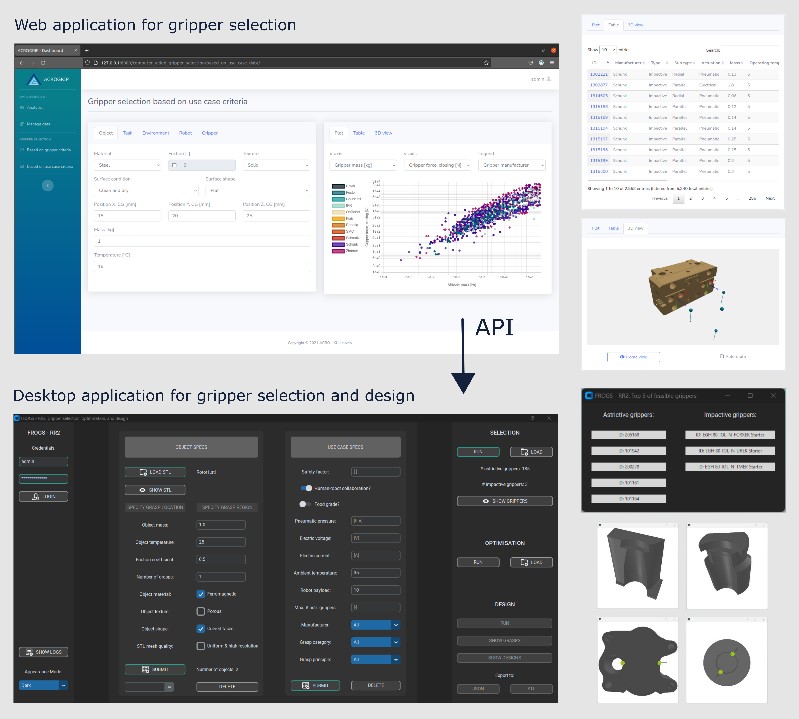
Robotic grippers are an essential link in automated manufacturing processes. Considering the shift towards more product versatility (high mix low volume) and the increasing demand for handling more challenging objects such as, for example; undefined objects (e.g. waste streams), non-rigid/fragile products (e.g., composites and food), HRC applications... the expected functionalities of robotic grippers are evolving rapidly.
With this research we would like to assist machine builders/system integrators with their selection and/or design of appropriate gripper solutions.
Dual robot skill exection
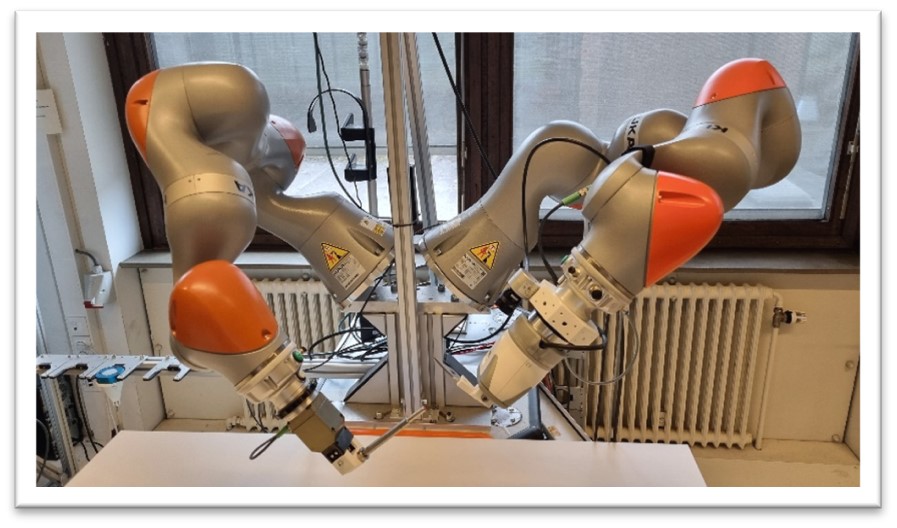
This demo will show the execution of skills developed in the PROUD SBO project using two robots to perform a complex task.
Try to get our AGV stuck within our rule set
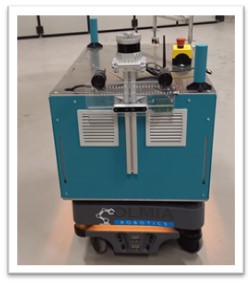
Traditional AGV's follow predetermined routes. Lately, most commercial AGV's are capable to overtake unforeseen obstacles on this route. Often this is done using predefined avoidance maneuvers. More advanced AGV's utilize online obstacle avoidance algorithms that take the current situation into account. Here we demonstrate a novel online obstacle avoidance algorithm that outperforms state-of-the-art algorithms.
In the demo, a mobile robot travels around a larger scale environment (around 6x6 to 10x10 meter). The robot is instructed to go from point A to point B, and there is a single (unique) nominal path from A to B. Randomly, obstacles are placed along the global path of the robot by the visitor. The robot travels along the global path, but efficiently avoids all the obstacles in its place.
SmartFactory - manufacturer independent robot programming
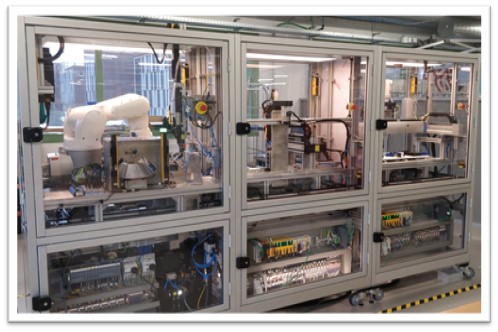
SmartFactory is demonstration platform that showcases the industry 4.0 state of the practice possibilities. It's a co-creation together with 9 industrial partners. The demonstration will explain how robots can be integrated in a vendor independent way using commercially available software. We will highlight the pro's & con's based on our practical experience on the SmartFactory.
R2poweR: a gearbox for lightweight & efficient robotic actuation
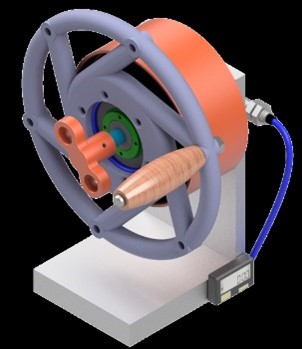
R2poweR is a novel planetary gearbox technology developed by the robotics team of the VUB, which can reduce by 50% the weight and energy consumption of modern robotic devices (cobots, exoskeletons, prostheses, humanoids,…)
Bin picking of objects without the use of 3D camera's
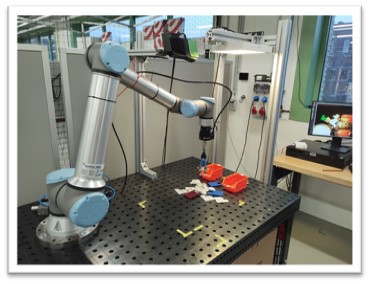
A camera is mounted above a workspace where flat/reflective objects are lying randomly. A model trained on synthetic data will determine which object is laying on top and will identify the correct bin to put them in, sorting a pile of these objects in the process. This whole process works without an expensive 3D sensor.
Automatic active vision inspection of industrial objects with a cobot arm
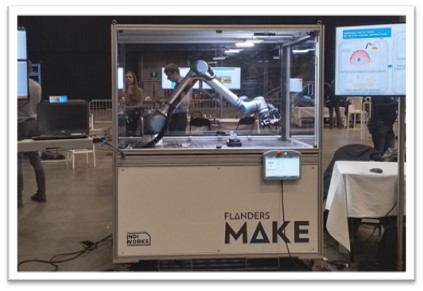
An algorithm will determine the most valuable viewpoints based on the cad model. The robot, which has a camera mounted on the end effector, will go to the viewpoints and run an anomaly detection algorithm to determine if the object has any defects or not.
Low cost intuitive haptic teleoperation for 6-DOF industrial manipulators
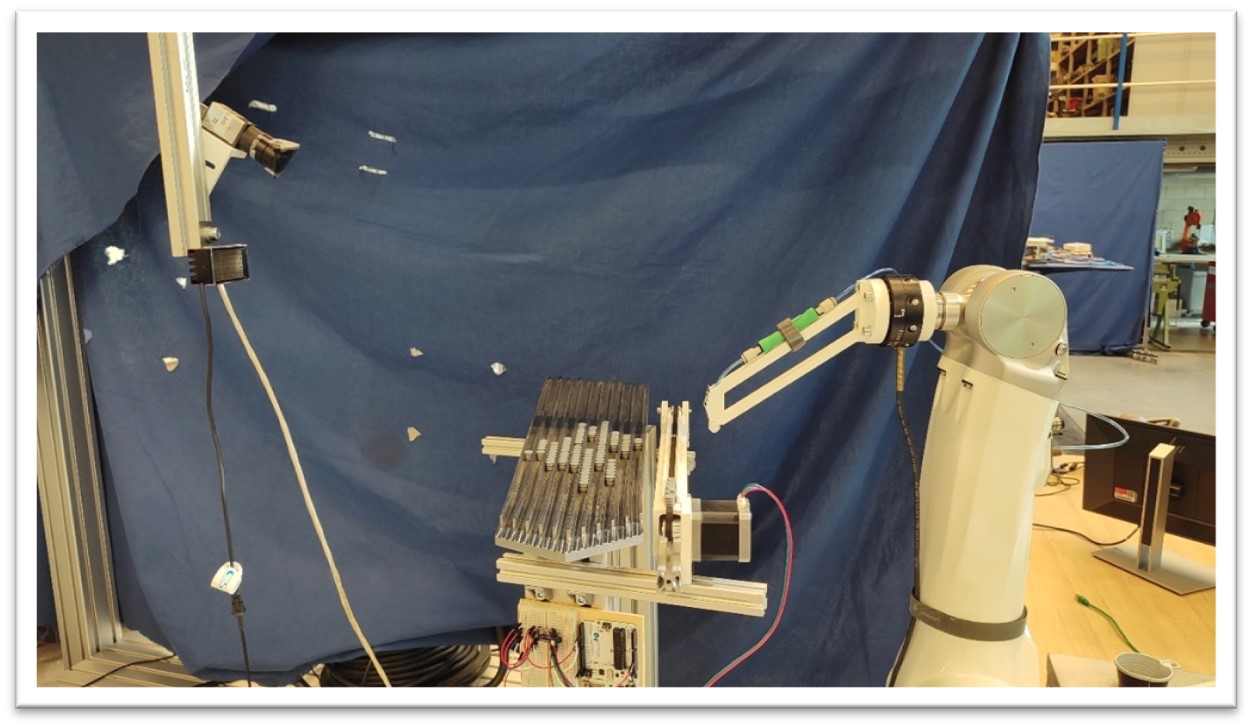
Industrial robots are capable of performing automated tasks repeatedly, reliably and accurately. However, in some scenarios, human-in-the-loop control is required. In this case, having an intuitive system for moving the robot within the working environment is crucial. Additionally, the operator should be aided by sensory feedback to obtain a user-friendly robot control system. Haptic feedback is one way of achieving such a system.
Hybrid Multi-Reasoning Warehouse Fleet Management System
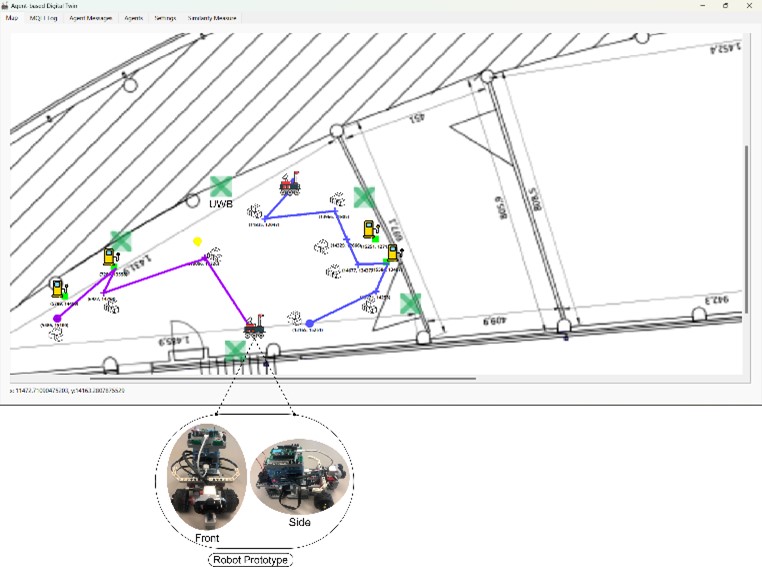
This demo illustrates the capabilities of a smart warehouse management system supported by a hybrid multi-reasoning mechanism. Warehouse assets such as robots can be operated and controlled with different reasoning mechanisms (decision-making procedures), making the system more dynamic, flexible and adaptive. Thus, the same robot can perform different tasks with different reasoning mechanisms.
Safe hybrid cobots using innovative collision-tolerant clutch and torque sensing
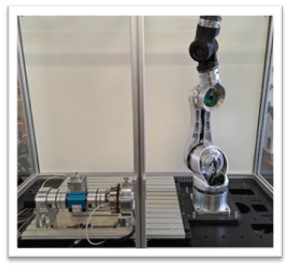
An innovative hybrid robot capable of switching between collaborative and high-speed mode combines the advantages of both the cobot and the high-speed industrial robot. Equipping its joints with an instrumented overload clutch (patented) safeguards humans during collaborative mode and protects the robot hardware during a collision in high-speed mode.
Autonomous lightweight drone for inventory and inspection
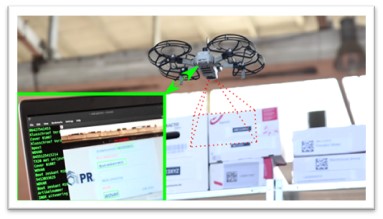
In this demonstration, a small commercially available drone is used for a warehouse inventory task.
The drone is controlled remotely by an AI that takes over the pilot functions and has no on-board computing power or expensive sensors. This allows the drone to stay lightweight, low-cost and safe.
AI algorithms can perform various tasks on the live video stream such as reading all labels and storing them in a database together with the exact location where this label was read.
For the proof of concept, the drone navigates based on an indoor Ultra Wide Band navigation system that requires some additional infrastructure in the warehouses. A next step would be using the live video stream to navigate the drone based on features and objects that are detected in the environment.
Projects that you will discover
FROGS
In FROGS, Flanders Make collaborates with partners like Atlas Copco, KUKA, Niko, Octinion and Pickit, to overcome the challenges faced by robots in flexible gripping and picking. Traditional robot applications use grippers specifically designed for particular objects, but for applications with frequent object variation or organic products, a different solution is needed. The research aims to develop a system architecture that can handle objects of different sizes, positions, and shapes, with features such as a fast retrainable control system, quick design of gripping fingers for new products, and the ability to detect and auto correct object grasping.
PROUD
PROUD aims to develop a hybrid framework that combines model-based techniques with interactive learning techniques for robot programming. By incorporating model information and other sources of information, the goal is to increase learning speed and interpretability while reducing the need for programming skills. The project consists of four main parts: a constraint-based parametric skill framework, a CAD interface, a learnable parameter component, and a user interface, which are brought together in the PROUD architecture.
CEROS
CEROS aims to meet the growing demand from businesses for support in designing and implementing flexible robot systems using nearly market-ready techniques. The project's goal is to disseminate knowledge and efficiently assist businesses in adopting appropriate technology for flexible robot systems in their production environments. The target audience includes small, medium, and large enterprises that are open to or already have experience in applying robotics.
TUPIC
TUPIC focuses on addressing the limitations of traditional industry controllers by exploring data-driven Artificial Intelligence methods, specifically Reinforcement Learning. While manual tuning by experts or model-based control is currently used for complex systems, these approaches have their limitations. The proposal aims to leverage data-driven AI methods to tune parametrized controllers during commissioning, ensuring safety and stability, simplifying validation, and increasing robustness and transferability to different tasks, conditions, and systems. This approach aims to improve efficiency, accuracy, and performance in industrial settings.
SMARTFACTORY
SmartFactory aims to address the challenges faced by production companies in the Benelux region. These challenges include the need for customized products, shorter delivery times, and avoiding additional costs. To overcome these issues, the project focuses on transforming factories into flexible, smart, and digital workplaces, enabling them to efficiently produce custom products and adapt to changing market demands.
R2POWER
R2poweR is a novel planetary gearbox technology developed by the robotics team of FlandersMake@VUB, which can reduce by 50% the weight and energy consumption of modern robotic devices (cobots, exoskeletons, prostheses, humanoids,…)
HYSLAM
HYSLAM focuses on advancing obstacle avoidance capabilities in traditional Automated Guided Vehicles (AGVs). While most commercial AGVs can handle unforeseen obstacles by using predefined avoidance maneuvers, more advanced AGVs employ online obstacle avoidance algorithms that consider the current situation. In this project, a novel online obstacle avoidance algorithm is presented, demonstrating superior performance compared to existing state-of-the-art algorithms.
LOW COST INTUITIVE HAPTIC TELEOPERATION FOR 6-DOF INDUSTRIAL MANIPULATORS
Industrial robots are capable of performing automated tasks repeatedly, reliably and accurately. However, in some scenarios, human-in-the-loop control is required. In this case, having an intuitive system for moving the robot within the working environment is crucial. Additionally, the operator should be aided by sensory feedback to obtain a user-friendly robot control system. Haptic feedback is one way of achieving such a system.
ACCUPART
3D scanning is a suitable tool for defect detection, but currently, it requires a lot of manual configuration or even manipulation of the scanner. The technology we developed allows 3D scanning to be applied for mass customization without the need for human intervention.
ADAVI
The ADAVI project focuses on developing a mobile camera mounted on a cobot arm to enable efficient visual inspection of industrial objects. Its primary objectives include achieving fast, accurate, and reliable assessments of surfaces and areas that are typically inaccessible. The project also emphasizes research on optimal viewing angles to detect even the slightest defects and ensure comprehensive scanning of the entire object.
PILS
The project aims to lower deployment costs for computer vision systems in manufacturing quality control by reducing data acquisition and labeling efforts while increasing robustness. It focuses on minimizing real-world training data requirements for visual inspection algorithms in low volume manufacturing settings. The project generates continuous updates to four main results: CAD2RENDER for generating synthetic images from CAD drawings, CAD2DETECT for object detection in various configurations, CAD2POSE for precise object pose estimation, and CAD2DEFECT for detecting tiny surface defects.
ACROGRIP
Acrogrip is a project that focuses on three main aspects:
- Technology review: providing information about the latest advancements in flexible gripping technologies, sensors, and controls.
- Use cases and living lab: personally testing and analyzing a range of innovative gripping technologies.
- Gripper selection via web tool: developing and making available a methodology for selecting grippers through an online tool.